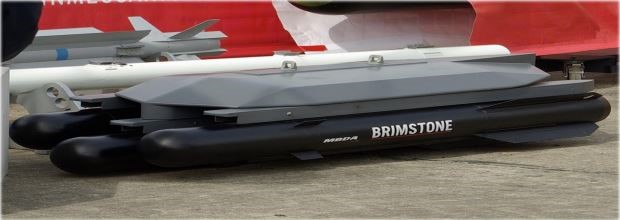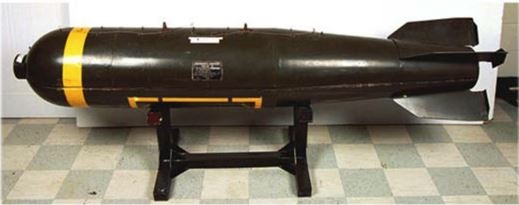US Ambassador to the UN Nikki Haley on Thursday appeared standing before parts of a ballistic missile that she claimed Iran delivered to Houthis in Yemen, who then fired it at the Riyadh airport in Saudi Arabia last month.
In reaction, Iran’s Mission to the UN has published a document to prove wrong the US accusations.
According to a Farsi report by Fars News Agency, the document, which was published in English on the Iranian mission’s website on Friday and was also tweeted by Iranian Foreign Minister Mohammad Javad Zarif, has set forth Tehran’s explanations to prove that Nikki Haley’s claims are false.
“In an age of alternative evidence, some inconvenient facts about the war in Yemen (are presented here),” reads the document, which is called “Yemen: A refutation of alternative evidence”.
Following are highlights of the document:
Facts & Figures
- Saudi Arabia and the United Arab Emirates (UAE) have since March 2015 instigated a humanitarian catastrophe of Biblical proportions in the poorest of Arab nations. More than 10,000 people in Yemen have been killed in over two years of heavy airstrikes and fighting which have destroyed countless schools, hospitals, factories and other civilian targets. These attacks constitute war crimes.
- Indeed, at least 3,158 aerial attacks over the past two years have struck non-military sites.
- Having imposed a naval blockade, Saudi Arabia has created a man-made famine that has put 17 million Yemenis on the brink of disaster.
- The worst outbreak of cholera in recorded history has afflicted over one million Yemenis. Aid organizations are now warning of a diphtheria epidemic.
US’ Direct Complicity in this Calamity
- Last year, Saudi Arabia was the world’s second largest weapons buyer, increasing its intake by 212% – mainly from the United States.
- President Donald Trump’s trip to Riyadh in May featured the signing of a $110 billion arms deal.
- As recently as late last month, it was confirmed that Raytheon and Boeing will sell thousands of ‘precision guided munitions’ worth $7 billion as part of this mega agreement.
- The Western munitions dropped by Saudi warplanes are mainly Joint Direct Attack Munitions (JDAMs) and Paveway missiles. But Riyadh’s aerial attacks on Yemen have, according to the Stockholm International Peace Research Institute, also included US-supplied cluster munitions. These bombs are banned under a treaty signed by 119 nations.
- Apart from being armed by the United States, the Saudi military also relies on the Trump administration to conduct war in Yemen. The Saudi-led bombing campaign has been directly bolstered by the provision of targeting information, logistical support and daily refuelling of warplanes by US personnel.
Interconnection between Trump & Obama
- The United States has supported the Saudi-led bombing campaign from the very beginning, including by refuelling Saudi-led warplanes in mid-air.
- In 2015, a sales process began for more than 8,000 laser-guided bombs for the Saudi air force.
- The Obama administration signed a total of 42 weapons deals with Saudi Arabia. Worth over $115 billion, they were highest level of arms sales offers by any administration in the history of the US-Saudi relationship.
- Saudi Arabia’s naval blockade of Yemen has directly cut off imports of everything from food to energy supplies, putting 17 million people on the brink of famine. Mindful of this, the United States in October 2015 announced a $10 billion deal to supply Riyadh with Multi-Mission Surface Combatant (MMSC) ships. According to the Pentagon, the aim of this included “support [for the] strategic objectives of the United States.”
US Bombs & Missiles
- The munitions which are being used by Saudi Arabia in Yemen include Raytheon’s Paveway IV missile. This weapon has been found at scenes including vital food stores and civilian sites.

Lethal projectiles with ominous names such as Brimstone and Storm Shadow, as well as PGM500 bombs and ALARM missiles have also been sold to Saudi Arabia.



Where Did Yemeni Ballistic Missiles Come from?
- Ballistic missiles in Yemen are nothing new. Both South and North Yemen imported such weapons in the decades since the 1970s, mainly from the Soviet Union. Indeed, several SCUD missiles were deployed during their civil war in 1994.
- Late dictator Ali Abdullah Saleh further replenished his relatively expansive ballistic missile arsenal by purchasing North Korean SCUDs.
- The latter missiles were interdicted by Spanish forces in December 2002 and handed over to the US Navy.
- Ultimately evading both censure and seizure of these munitions – on account of being a staunch US and Saudi ally – Saleh was allowed to keep the North Korean missiles by the George W Bush administration.
- Thus, at the time of the outbreak of the war in Yemen in 2015, the country had an estimated 300 SCUDs. Some of these munitions, reportedly modified by Yemeni engineers, have been fired at Saudi Arabia in retaliation for the countless airstrikes over the past two years.
- South Korean intelligence confirmed in July 2015 that SCUDs which had been fired into Saudi Arabia were the very North Korean missiles which the United States and Saudi Arabia had green-lighted for delivery to Yemen in 2002.
- The UN panel tasked with investigating Saudi and US claims of Iranian missile transfers to Yemen has neither found evidence of such supposed deliveries nor proof of foreign assistance with the use of such weapons.
- On the contrary, the panel has established that exclusively Yemeni experts fired the missiles in question, and that no missile components are likely to have been smuggled into the country via the Red Sea – directly contradicting the Saudi rationale for blockading Yemen.
- Curiously, the UN panel has reportedly found both US and Iranian components in the said missile fragments. On the basis of the logic presented by Saudi Arabia and the Trump administration, both the United States and Iran are thus apparently aiding Yemenis in their missile development.
- Last but certainly not least, neither Saudi nor US officials have provided any information on when the supposed weapons deliveries took place. In fact, the Trump administration has indicated that it does not know when the alleged transfer of Iranian arms was made.
- Furthermore, US officials appear unaware of when and where some of the weapons in question were supposedly used.
Conclusions:
- Yemenis are capable of firing missiles either tweaked or assembled in Yemen.
- No missile components have entered Yemen via blockaded ports.
- UN experts have found both US and Iranian components in Yemeni missile fragments.
- Neither the US nor Saudi Arabia have provided any information on the dates in which the alleged Iranian weapons were delivered, and when and where some of them are claimed to have been used.
The US-Saudi Lies
- Nothing stated by the Trump administration and its regional allies thus has any basis in truth but rather in ‘alternative evidence’ or ‘alternative facts’.
- The world has seen this show before. It won’t entertain it again.
Iran’s Proposed Plan
- Iran has since the outset of the war in Yemen offered a reasonable and practical approach to address this painful and unnecessary crisis—and it’s time to recognize that there is no military solution.
- Iran’s plan calls for an immediate ceasefire, humanitarian assistance and facilitation of intra-Yemeni dialogue, leading to the formation of an inclusive, broad-based national unity government.
- Iran is therefore hopeful that responsible actors outside the Middle East will focus their efforts on urging their allies in its region to take seriously its longstanding proposal for a regional dialogue forum.
- It holds the promise of a good start, and Iran once again invites all of its neighbours to participate. No one should want this suffering to continue.
